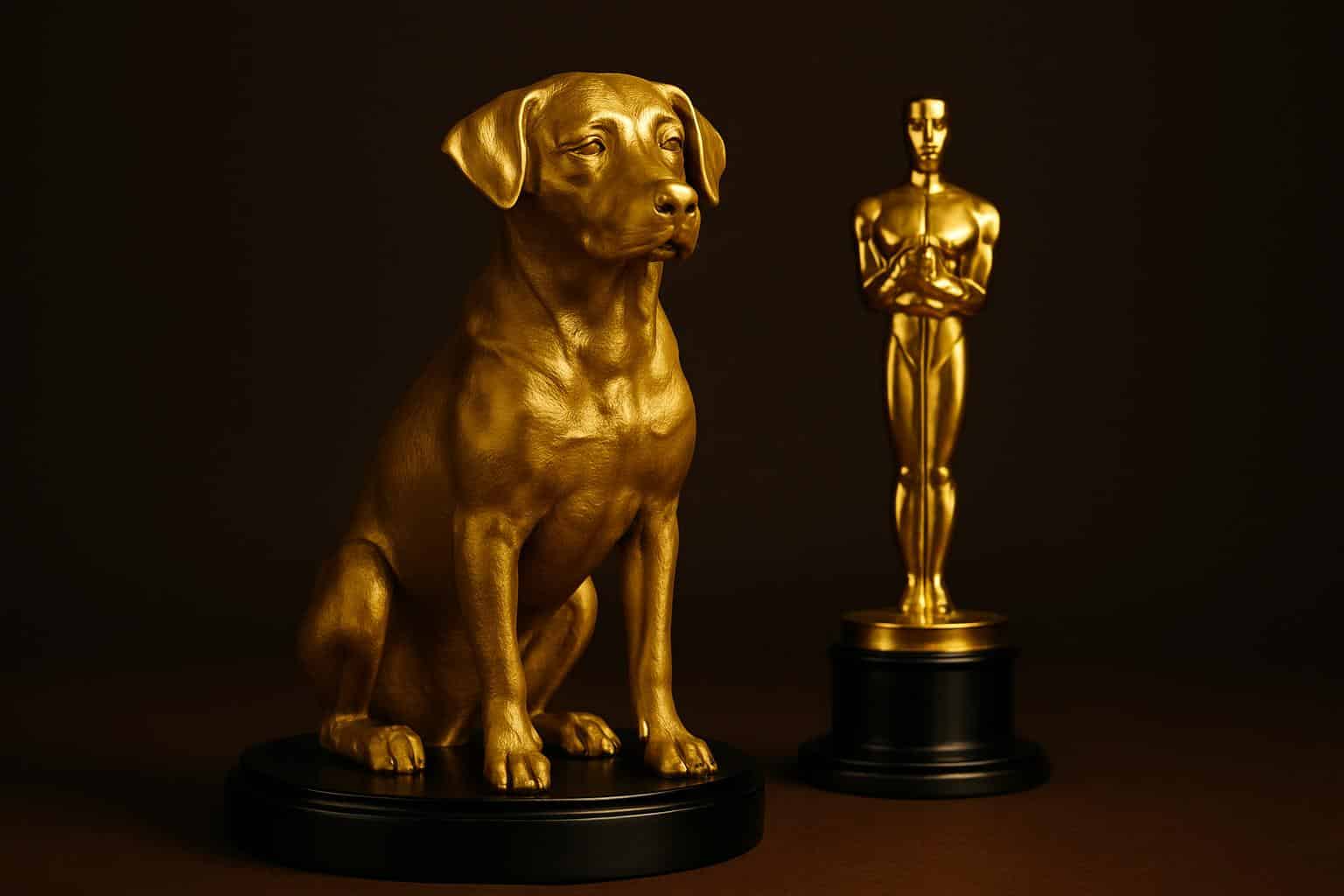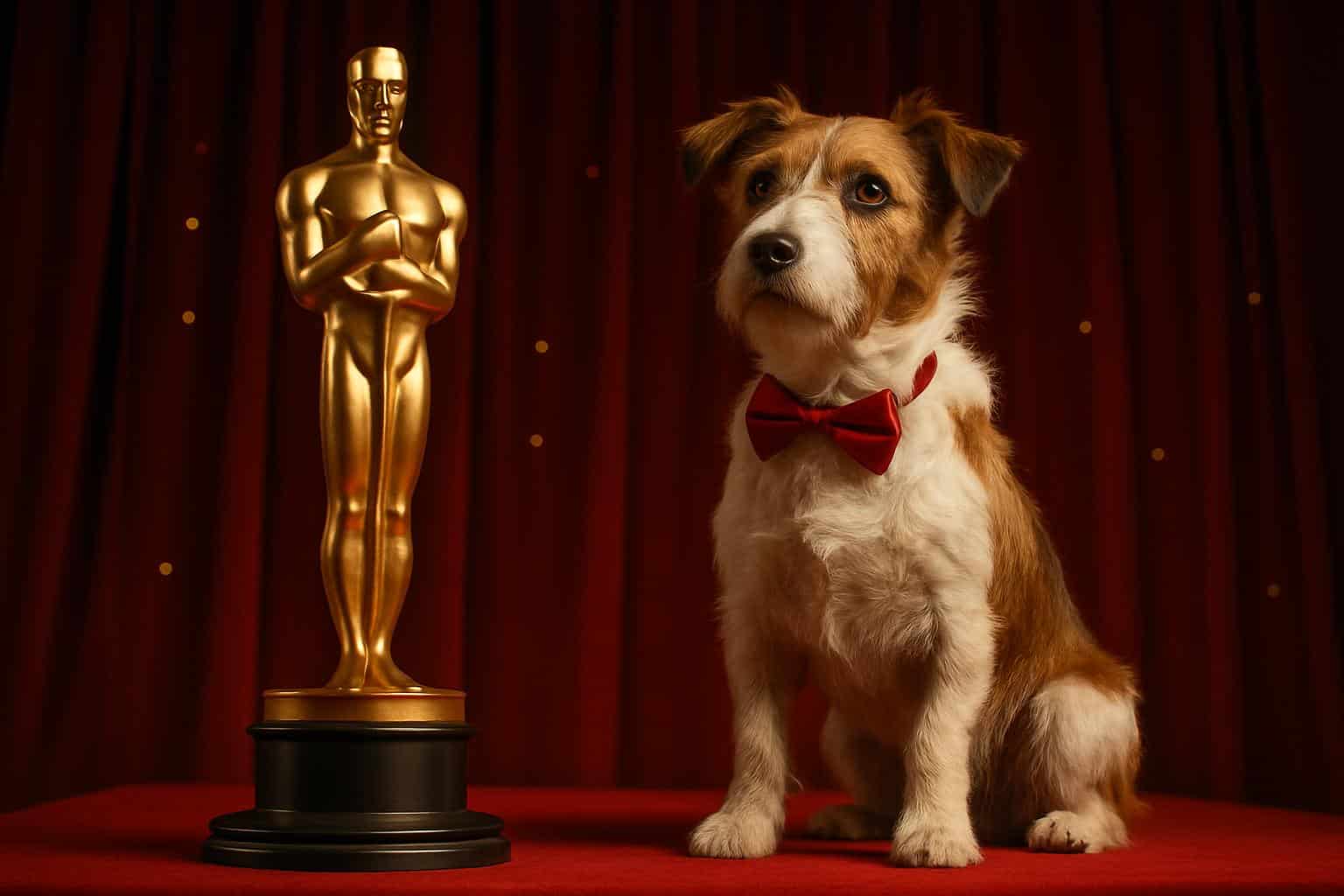Hollywood’s hottest new leading man is a dog, and he refuses to be left out of awards season.
Indy, the headlining hound of the thriller Good Boy, has put a (twinkling) spotlight on an old blind spot within the Oscars’ rulebook by lobbying for his performance to be taken into consideration by the Academy of Motion Picture Arts and Sciences.

In an amusing, tail-wagging letter, Indy makes the case that actors aren’t just human and his craft deserves the same status as his two-legged co-stars. “This news comes at me like I’m on a leash and someone yanked it short,” he writes of finding out the acting categories are human-only, and that his snub means he is “not a good enough boy.”
A Canine Argument for Recognition at the Oscars
Official Academy acting categories have historically honored human performers, meaning animal actors onscreen — even when they stir audiences and critics — tend to be left out. Indy’s appeal isn’t just in pursuit of a novelty headliner; it’s pushing against the norm, demanding that the Academy hear him out and recognize that performance is performance, regardless of species.
There is a precedent, however, for cultural recognition of four-legged thespians. The Cannes Film Festival bestows a Palm Dog each year on an outstanding pooch performance, and cherished movie pets including Uggie of “The Artist” and Messi of “Anatomy of a Fall” have unspooled red carpets and stolen hearts across the globe. But few signs of that momentum have seeped onto an Oscar path here, a reminder that accolades continue to lag behind the zeitgeist. The Academy’s Board of Governors can change categories — recent governance changes have demonstrated as much — and Indy’s campaign invites that discussion.
How Good Boy Constructed a Performance for Indy
Indy’s appearance in Good Boy wasn’t an accident. That onscreen presence was developed over several years by filmmakers Ben Leonberg and Kari Fischer — Indy’s humans, incidentally. They built scenes around what Indy does best — matching performance beats to canine behavior, framing eyelines and blocking to get the moments they needed without ever putting their star in duress.
The craft here is slyly sophisticated. Trainers and directors often use positive reinforcement, scent cues and precise marks so that an animal can “hit” moments safely — and then sell intention and emotion on camera. Good Boy relies on those tools rather than fear or force. The result is a performance that feels character-driven and cinematic — following best practices advocated by animal-safety experts like American Humane.
Industry Precedents and Possibilities for Awards
Indy’s pitch clears many lanes for carriage. The Academy has historically deployed special honors to acknowledge achievements that do not quite fit into existing categories, from technical breakthroughs to milestone contributions. A notice, or special achievement citation in recognition of animal work — shared with trainers and filmmakers — wouldn’t disrupt it midstream.

There’s also an audience case to be argued. Dog performances consistently stoke social media buzz and chatter logged by fan resources like Does the Dog Die, which reflects how strongly audiences feel for animal characters. With tens of millions of dog-owning households in the United States, according to industry groups like the American Pet Products Association, celebrating animal artistry could help meaningfully engage viewers with a vested interest in those on-screen pets.
What Recognition Could Mean for Animal Performers
Sorry, but an animal up for an Oscar remains a long shot under current guidelines, though the Academy has two years to plot a reconciliation of its artistic and pragmatic duties. It could take the form of a one-off Governors Award honoring outstanding animal acting, or whatever it’s called, where an animal performer will be joined by its trainer or performance team — a reminder that the work is collaborative. The change would respect art while strengthening on-set safety protocols.
More importantly, it would reverberate beyond a campaign. Raising the bar for animal action raises standards for how animals are treated on set, promotes openness about training methods and gives new visibility to those craftspeople who make such instances possible — trainers, handlers, editors and cinematographers.
The Campaign Trail Ahead for Indy and Good Boy
For now, Indy’s team is doing what every awards hopeful does:
- Screenings
- Guild and branch conversations
- A consistent drumbeat reminding voters why this performance connected on the festival circuit and in theaters
While a statuette might still be out of reach, momentum could also help foster acceptance for animal actors across critics’ awards and international festivals.
Indy’s gentle suggestion is more than a gambit: It’s an impetus to update the industry definition of acting. Through an honorary salute or a new mechanism, it has the opportunity to honor a performance that will be remembered long after everything else and expands the frame for who gets to be called a star.

